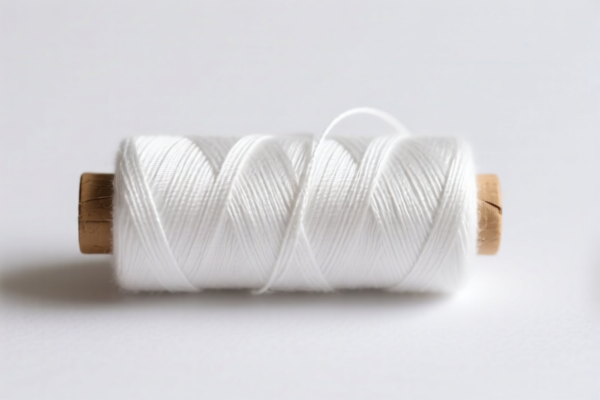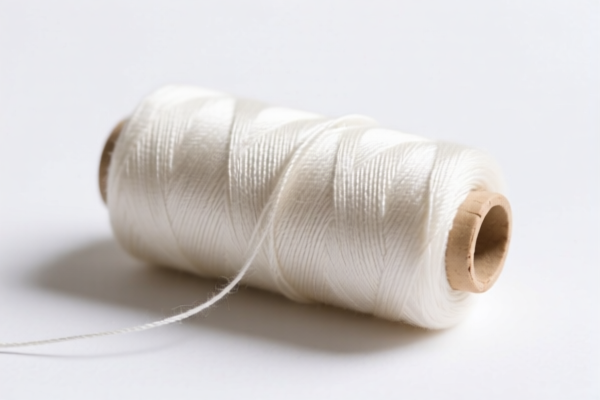| HS Code | Official Doc | Tariff Rate | Origin | Destination | Effective Date |
|---|---|---|---|---|---|
| 6006909000 | Doc | 55.0% | CN | US | 2025-05-12 |




Weaving Thread
Weaving thread, also known as yarn or warp and weft thread, is a long continuous strand used to create fabric or other textile products through the process of weaving. It is a fundamental component in textile arts and industrial fabric production.
Material
Weaving threads are produced from a diverse range of materials, categorized broadly as:
- Natural Fibers:
- Plant Fibers: Cotton, linen (from flax), hemp, jute, ramie, sisal. These are known for their breathability, absorbency, and comfort.
- Animal Fibers: Wool (from sheep), silk (from silkworms), cashmere (from cashmere goats), mohair (from Angora goats), alpaca. These offer warmth, luster, and varying degrees of softness.
- Synthetic Fibers:
- Polyester: Durable, wrinkle-resistant, and affordable. Commonly used in blends and for outdoor fabrics.
- Nylon: Strong, elastic, and abrasion-resistant. Often used in hosiery, sportswear, and industrial applications.
- Acrylic: Soft, warm, and lightweight. Often used as a wool substitute.
- Rayon/Viscose: Semi-synthetic, derived from cellulose. Offers a silk-like appearance and drape.
- Metallic Fibers: Gold, silver, or coated polymers, used for decorative effects and special applications.
Purpose
The primary purpose of weaving thread is to interlace with other threads to create a structured fabric. This fabric can then be used for:
- Clothing: Shirts, pants, dresses, suits, etc.
- Home Textiles: Bedding, curtains, upholstery, towels, carpets.
- Industrial Applications: Filters, ropes, conveyor belts, tire cords, medical textiles.
- Artistic Applications: Tapestries, embroidery, wall hangings.
Function
Weaving thread functions through its tensile strength, flexibility, and ability to hold a knot. The specific properties of the thread determine the characteristics of the final fabric:
- Warp Threads: Run lengthwise on the loom and provide the structural foundation of the fabric. Typically stronger and more durable than weft threads.
- Weft Threads: Run crosswise and are interlaced with the warp threads. Contribute to the fabric's texture, drape, and appearance.
Usage Scenarios
- Hand Loom Weaving: Artisans use various threads to create unique and customized fabrics.
- Industrial Weaving: Large-scale production of fabrics using automated looms.
- Embroidery: Fine threads are used to create decorative designs on fabric surfaces.
- Sewing: Thread is used to join fabric pieces together.
- Knitting & Crochet: Although not weaving, similar threads are used to create fabric through different interlacing methods.
Common Types
- Cotton Thread: Versatile, absorbent, and comfortable. Used for quilting, sewing, and general crafting.
- Polyester Thread: Strong, durable, and wrinkle-resistant. Ideal for machine sewing and outdoor applications.
- Silk Thread: Luxurious, smooth, and strong. Used for embroidery, quilting, and high-end sewing.
- Wool Thread: Warm, soft, and absorbent. Used for knitting, crochet, and embroidery.
- Upholstery Thread: Heavy-duty thread designed for furniture and other durable applications.
- Embroidery Floss: Typically made of cotton or rayon, consisting of six strands that can be separated for varying thickness.
- Variegated Thread: Contains multiple colors for a textured or patterned effect.
Based on the provided information, the declared goods "weaving thread" can be classified under the following HS codes:
- 6006909000: Other knitted or crocheted fabrics: Other: Other. This HS code covers fabrics produced by knitting or crocheting, specifically those falling under the category of "Other" within "Other" subcategories. It is applicable to weaving thread that is knitted or crocheted and doesn’t fall into more specific classifications.
- 60: Textiles
- 06: Knitted or crocheted fabrics
- 909000: Other: Other – indicating a broad category for fabrics not elsewhere specified within knitted or crocheted materials.
Tax Rate Details:
- Basic Tariff: 0.0%
- Additional Tariff: 25.0%
- Additional Tariff (after April 2, 2025): 30%
- Total Tariff: 55.0%
Customer Reviews
No reviews yet.